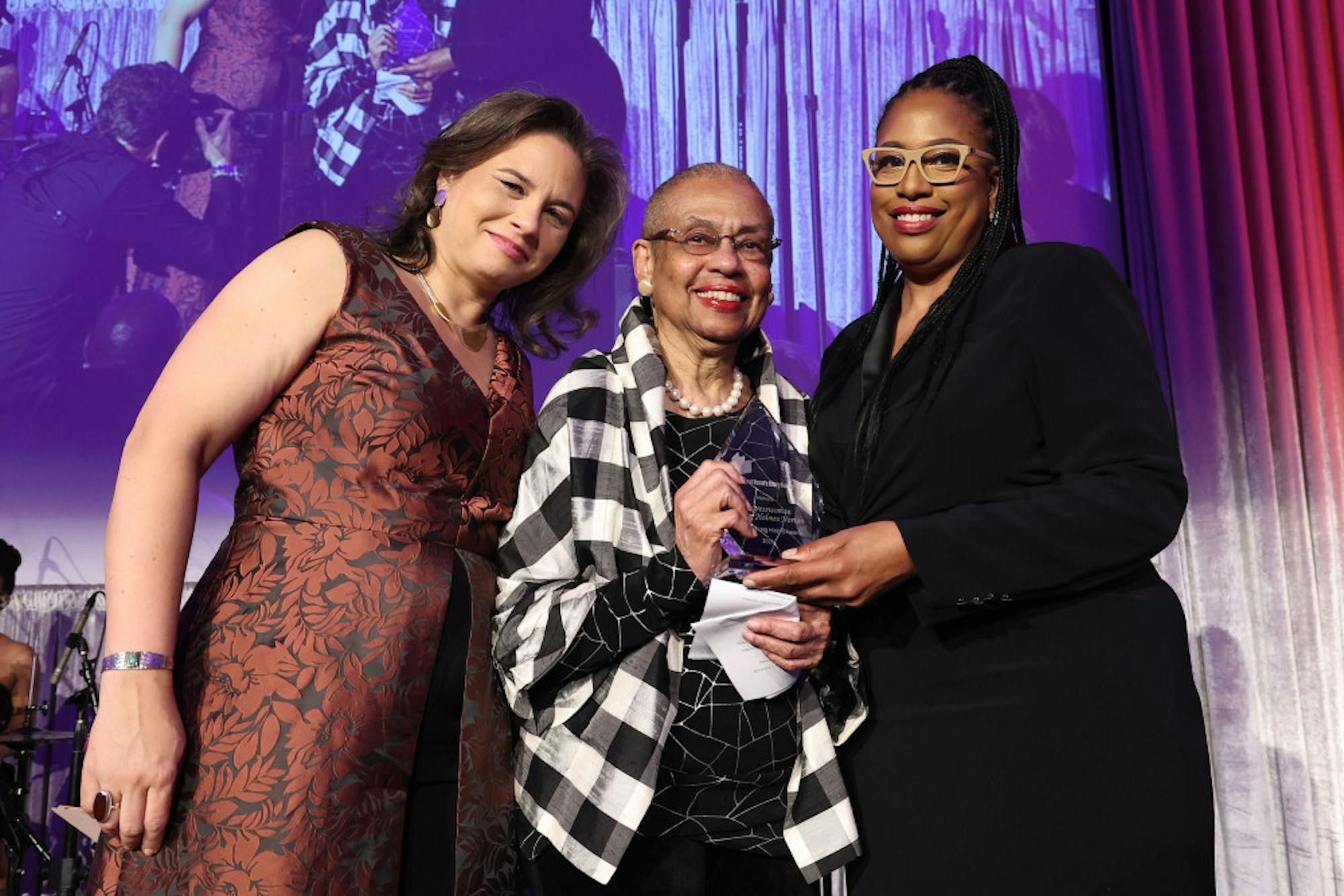Kendra Field, associate professor of history and director of the Center for the Study of Race and Democracy at Tufts, co-curated a new exhibition at the Martin Luther King Jr. Memorial Library in Washington, D.C.
The exhibition, titled “We Who Believe In Freedom: Black Feminist DC,” opened in March and was created in partnership with the National Women’s History Museum. The endeavor goes hand in hand with Field’s past work and research, including her book “Growing Up with the Country: Family, Race, and Nation after the Civil War,” which draws heavily on African American family history and archival research.
Field explained the goals and content of the exhibition, which will be on display through September 2024, in an email to the Daily.
“‘We Who Believe in Freedom: Black Feminist DC’ tells the stories of Black women and feminists who fought long and hard, bravely and creatively, for their rights and place in society,” she wrote. “This exhibition showcases the past, present, and future of Black feminism within and beyond the nation’s capital.”
Richard Reyes-Gavilan, executive director of the DC Public Library, also spoke on the exhibition’s significance.
“The Library’s partnership with the National Women’s History Museum is an opportunity to amplify the voices of activists and leaders known to too few,” Reyes-Gavilan wrote in a statement to the Daily. “It is a step towards recognizing the importance of Black women's outsized contributions in the struggle for freedom and justice.”
Field explained the process for setting up the exhibition, in partnership with both the libraries and other colleagues.
“My longtime colleague Dr. Sherie Randolph and I co-curated this exhibition together over the last year. I covered the earlier (post emancipation) era, and Dr. Randolph covered the civil rights and Black power eras,” Field wrote. “It was wonderful to have the opportunity to explore more deeply the intergenerational communities that shaped several of the DC individuals I had encountered in my previous research as a historian.”
Zoe Schoen (LA’19), a project administrator and research assistant for the African American Trail Project, helped with research for this project. She spoke more about the work that went into preparing the exhibition.
“I mostly was looking for images and archival documents that we could show that would be compelling,” Schoen said. “One of the things that was really important to us was to try to find archival audio of the women who were featured speaking in their own voices.”
Schoen added that to help tell the story of the Civil Rights Movement, the team worked with local activists to collect personal photographs and items. Field noted how the late 19th and early 20th century stories that she researched in the creation of the exhibit were inspiring to her too.
“It was a gift to see how their work and communities in DC shaped the powerful lives, choices, and movements of future generations, of the civil rights and Black power generations, from Pauli Murray to Loretta Ross,” Field wrote.
She also explained how the culmination of her previous research and work experience helped her create the exhibition, highlighting specifically her expertise in family history.
“As a historian, my approach to the past and to storytelling has always centered on biographies and life histories,” Field wrote. “Exploring an individual life in depth, and in context – the particular struggles an individual was up against, and the creative, brilliant, and often surprising ways in which they responded – can reveal so much about American history, expanding our collective imagination for the past, and for the present.”
Schoen elaborated on the importance of the exhibit in its present-day context.
“I think it’s a radical exhibit, and it highlights some unsung heroes of the reproductive justice movement,” Schoen said. “It certainly establishes that the Civil Rights Movement began well before we tend to think that it began, and I think it argues also for the radical nature of Black feminism, in particular the way that Black feminism has constantly pushed the wider feminist movement to expand.”
Field said that talking about the past, and the origins of movements and language, is critical.
“I think a lot about the proximity of this past – how so many living today have grandparents whose own parents or grandparents experienced the end or immediate aftermath of American racial slavery,” Field wrote.
Schoen pointed out that issues discussed today, including those surrounding women’s autonomy, were also discussed by formerly enslaved people.
“There were women coming out of enslavement who had already started to think about some of these structures and how they were operating, and the need for women to come together to support each other and to fight for really radical ideas that expanded well beyond the category of women,” Schoen said.
Schoen said that, from personal experience, Field was a great fit as a co-curator for this exhibit.
“[She] is particularly an expert in Black genealogy and Black family history,” Schoen said. “I think she brought attention in the exhibit to not just these women but to their biographies more broadly. … I think when we can understand people in a more complex way that goes beyond just their public persona, we can also understand what drove them to dedicate their lives to particular struggles.”






